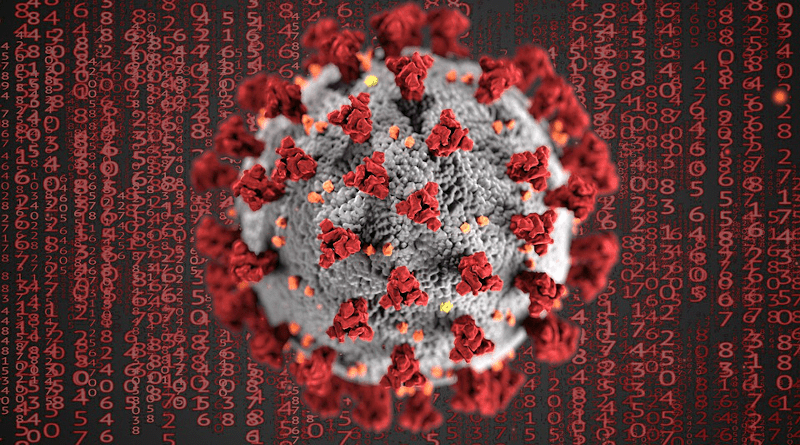New Biomarker For Severe COVID-19
During the pandemic, it has become increasingly evident that people with cardiovascular disease and obesity are at a much higher risk of developing very severe, even fatal COVID-19 disease. Researchers at Karolinska Institutet in Sweden have identified some metabolic processes that SARS-CoV-2 uses to attack lung tissue. The results, which are published in Molecular & Cellular Proteomics, could one day be used to treat COVID-19, and potentially for other viruses like the Crimean-Congo hemorrhagic fever virus and HIV-1.
The corona pandemic, caused by the SARS-CoV-2 virus, has given rise to a serious and ongoing global health crisis. Most people who fall ill with the disease develop mild to moderate symptoms; however, patients with metabolic disorders such as diabetes, cardiovascular diseases, and obesity are at higher risk of serious illness.
All viruses spread by “piggy-backing” on substances and processes that are vital to the cellular energy supply, the metabolic pathways, in an attacked body or other organisms.
The observation studies that have been done on COVID-19 patients during the pandemic indicate a correlation between disease severity and metabolic disorder with high levels of lipids (fats) in the blood. At the same time, metabolism is a highly individual process and is affected over time by multiple factors, including age, sex, diet, and lifestyle.
Researchers at Karolinska Institutet have now examined which parts of the cell’s energy supply are especially important to SARS-CoV-2 and how they affect the severity of the disease.
The covid virus is already known to use the metabolic pathway AKT/mTOR/HIF-1. The new study complements this understanding.
The researchers have discovered that glycolysis and glutaminolysis are the metabolic pathways that the virus “prefers” when attacking the lungs. Both are key processes in cellular energy supply and function.
“The study shows that when SARS-CoV-2 infects lung cells, glycolysis and glutaminolysis play an important part in its spread and growth,” says the paper’s last author, Ujjwal Neogi, researcher at the Department of Laboratory Medicine, Karolinska Institutet. “By blocking these pathways, we can limit viral production. We also observed several toxic metabolites, such as lactate and glutamate, in the blood plasma of the most severely ill patients.”
One of the study’s key findings is a biomarker for the severity of the disease.
“We’ve identified a carbohydrate, mannose, as a biomarker for severe COVID-19,” says the study’s first author Shuba Krishnan at the same department.
The researchers say that more now needs to be learned about the elevated levels of toxic metabolites in severely ill patients:
“Changes in these metabolites can have lasting effects on insulin resistance, neurocognitive disorders, and organ failure,” explains Carl Johan Treutiger, researcher at the Department of Medicine, Huddinge, Karolinska Institutet. “The elevated level of mannose has a potential correlation with the risk of developing type 2 diabetes after COVID-19 infection.”
The possible therapeutic strategy of blocking viral spread by starving it out via the cells’ energy supply could also prove an effective treatment for the Crimean-Congo haemorrhagic fever virus and a functional cure for HIV-1, two other viruses that the researchers are focusing on.
The results are based on blood samples of 41 patients with COVID-19 analysed using various techniques including plasma metabolomics. The researchers have also studied the molecular pathway through which SARS-CoV-2 enters lung tissue.

